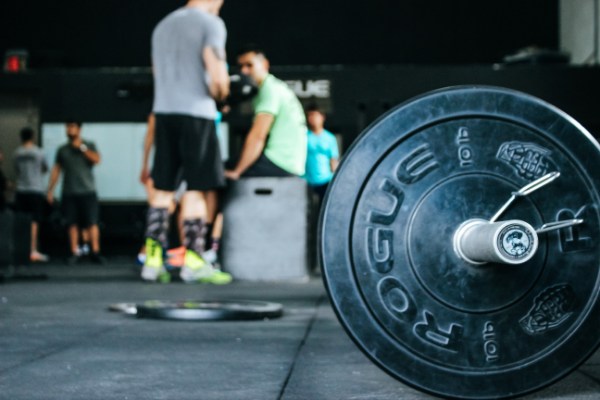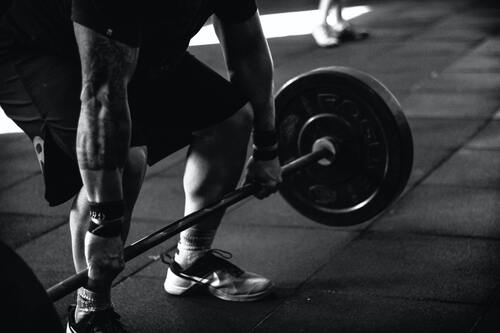There are many acronyms and abbreviations used in the fitness industry, and it can be difficult to remember them all. “What’s your squat PR?” is among the more typical questions you might hear. It indicates that they have surpassed their previous best in a workout or a lift. Learn more about PR in lifting by reading this article.
What Is A PR In Lifting
A PR in lifting usually works the same as in the gym. To set a personal record in lifting, however, you must use weights. Some instances of lifting PRs include:
- If you had performed a deadlift with 200 kg as your previous best. Lifting more than this would be also classed as a personal record
- It would also be considered a personal record if you had previously bench pressed 100 kg for 4 repetitions and were now able to do 6 repetitions with the same weight.
- Your previous best squat lift was 80 kg, and you just finished a 100 kg one-rep max. This qualifies as a personal record of lifting.
Why It’s Important To Hit New PRs
It is important to set new personal records when lifting and at the gym for a variety of reasons. The main factors are motivation, development, and alterations to your training program.
Motivation is one of the most crucial factors when it comes to moving forward with your training. Regularly achieving personal records can spur you on to work harder, train more intelligently, and confirm that your training is on the right track.
Setting new personal records for lifting and training can help you feel more confident and make the process more enjoyable, even if you don’t compete.
Don’t forget that setting a personal record doesn’t just mean lifting the most weight you can. More reps and even completing an exercise you’ve never done before can help you break personal records.
Consider breaking a personal record as compensation for your diligence. It is evident that all of the efforts are paying off. If you notice that your training is not consistently leading to PRs, you have good reason to revisit your plan and determine why this isn’t happening.
Remember that trying to set new personal records at every training session is unrealistic, but you should at least see an increase in your progress each month.
How To Test Your PR
You should warm up properly, be physically and mentally prepared, and be aware of the PR you’re attempting to set before testing your PR in any exercise.
You should warm up as described above if the PR is based on low repetitions or just one rep so that your body and nervous system are prepared to lift a heavy load. Don’t attempt a 3 rep personal record after performing a set of 10 reps at 50% of your maximum.
Allow your muscles to warm up while you take your time. If you’re trying to lift a volume that you haven’t attempted before, have a spotter nearby to support you. In some exercises, safety hooks or catches can be used as a backup plan in case you are unable to lift the weight.
Another source of inspiration and encouragement could come from a spotter or training partner.
The amount of weight you’ll be lifting won’t have as much of an impact on your muscles, joints, and ligaments if you’re trying to break a personal record in the hypertrophy sweet spot of 6–12 reps, so your warmups don’t need to be as lengthy and drawn out.
Perform several warm-up sets of the exercise you’re focusing on after a 5–10 minute dynamic warmup. Take action as soon as you feel loose and prepared mentally. As you should be pushing yourself to the point of near failure, it’s also critical to stay safe and have a spotter assist you.
You will be setting personal records for exercise as a beginner, but as you advance, it will become more difficult.
If you are advanced, you already know this, but for those in the intermediate range, it’s something to be aware of, so we don’t advise trying for an all-out one rep maximum too frequently.
Since there are some risks involved when pushing yourself to the absolute limit, the one-rep maximum is actually only for advanced lifters, the Olympics, and other competitions.
How To Keep Track Of Your PRs When Lifting
Keep track of your workouts and personal records so that you are aware of the PRs you have achieved.
Fortunately, there are numerous phone apps and other resources, including Microsoft Excel, that can be used to accomplish this. A training diary, however, can serve the same purpose if you’re stuck in the past.
Online training programs can also help you keep better track of your individual lifting records if you’re a more seasoned athlete. Tracking your workouts in the gym and keeping a database of your personal records is made easier with the aid of programs like Training Peaks, Gymahloic, and Fitbod.
They can also track your rest and assist you in developing your technique by showing you how to do certain things.
Tips To Set New PR
Use Various Of Exercises
To set a new PR for a particular exercise, it may seem counterintuitive to use a variety of exercises. The exercise you’re trying to break your PR on should be your main focus, but you should also make sure to perform lifts that engage similar muscle groups to improve your overall strength.
For instance, if your goal is to set a new personal record for bench presses, you should try to include incline/decline presses, pullovers, close grip presses, and shoulder presses in your exercise routine.
Proper Warmup Sets
Never attempt to set a new personal record without first warming up properly. In order to prepare you for trying to set a new personal record, a proper warmup should contain just the right amount of volume without exhausting you beforehand.
Set Goals
If you don’t start by setting goals, it’s difficult to break your PRs. The principle of progressive overload is central to weightlifting. If you lift more weight over time, you will become stronger. The best way to set goals is to have a clear objective that can be measured and is realistically achievable.
For instance, if your squat PR is 185 pounds for one rep, you can’t expect to have a goal of 350 pounds PR a month later. Setting a time frame for your goals will keep you motivated and on track. This is the final step in goal-setting.

Don’t make it difficult to maintain goals that are too far in the future. When setting new personal records in the gym, brief periods of 1-3 months typically work best.
Try Often
Even though we just advised that you set reasonable objectives, you still ought to make an effort to break your previous personal records more frequently. Realistically, you won’t always succeed in setting a new personal record.
Therefore, if you only attempt to set a new personal record once per month, you would only have made 12 attempts in a calendar year. There may be some failures in those attempts, which would decrease your chances of breaking your personal records.
Every workout, in our opinion, you should aim to set new personal records. Instead of basing these personal records on a single rep, athletes should aim to lift more repetitions of that exercise than they did the previous workout.
For instance, if you train tomorrow and can complete 10 deadlift repetitions at 200 pounds, you might want to try the following workout for 11 reps at 200 pounds or even 205 pounds at 10 reps.
Track Progress
You can see where you started and how far you’ve come with your hard work by keeping track of your progress in the gym. You can hold yourself responsible and become inspired to see what you’re capable of by keeping track of your workouts.
Progress is monitored by noting accomplishments and shortcomings. You can maintain focus and realize that successes are likely to come after failures in PR attempts if you have a clear picture of your weightlifting journey.
Stay Positive
If you don’t succeed in setting a new PR, don’t give up. Failure is a necessary component of both fitness and life. Positivity and a strong work ethic will help you succeed.
Health and fitness require a lifetime of ups and downs; it is not a 100-meter sprint. Success in life and in fitness depends on a combination of positivity and consistency.
Supplementation
You can smash your PRs with the help of supplements. We stick to the medications that have been shown to be secure and efficient.
Diet
The more nutrition and diet are studied by science, the more we realize how crucial diet is to our overall health and that you are what you eat. You should try to eat a well-balanced diet of protein, fat, and carbohydrates if you’re here because you want to set new personal records.
Setting new personal records is less likely if you’re dieting or in a caloric deficit because your body might not have the energy to carry you to the finish line.
Sleep
Gaining muscle and strength requires a good night’s sleep. Exercise performance can suffer as a result of lack of sleep. For muscle protein synthesis and the release of growth hormone, sleep is essential for our bodies ability to repair. Try to get between 7-9 hours of sleep each night!
Final Words
Regular testing is typical when following a training program to ensure that you are improving. This is an excellent way to update your PR for a variety of exercises. What does a new personal record in the gym mean? It indicates that you have made some progress toward becoming stronger.
